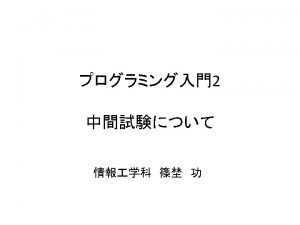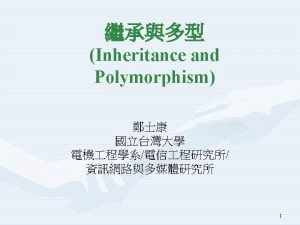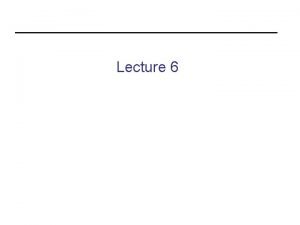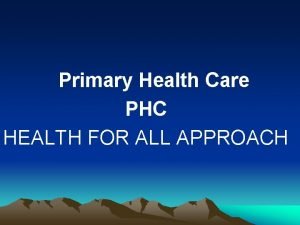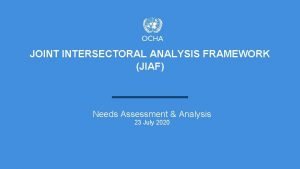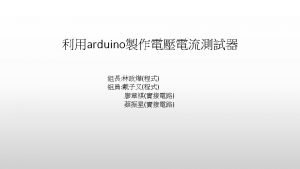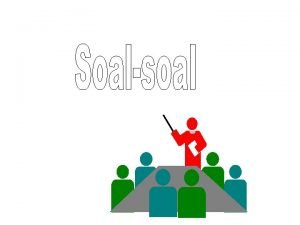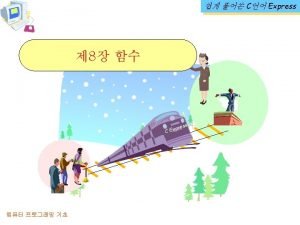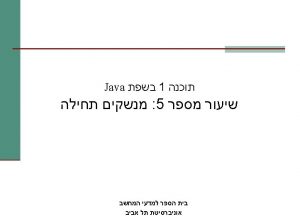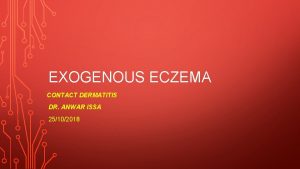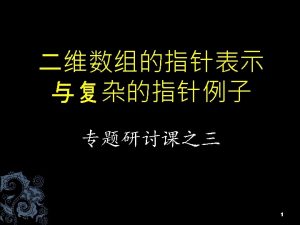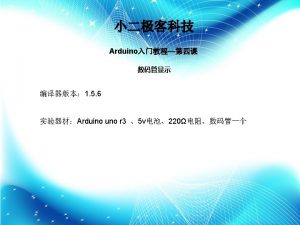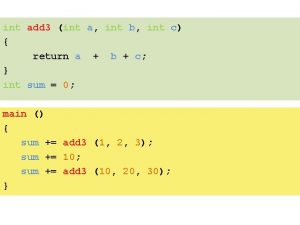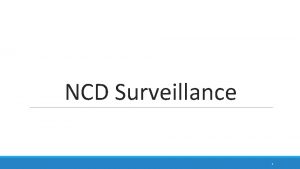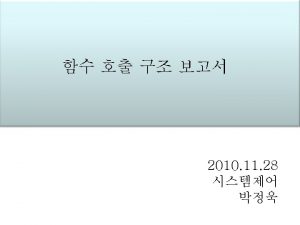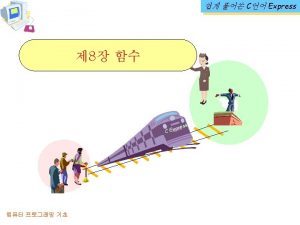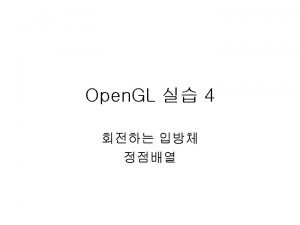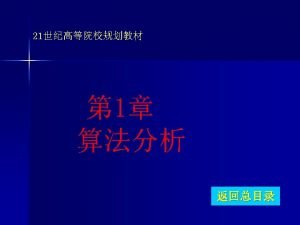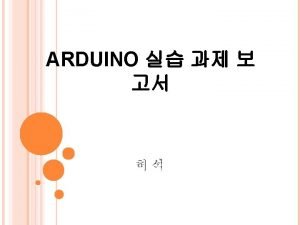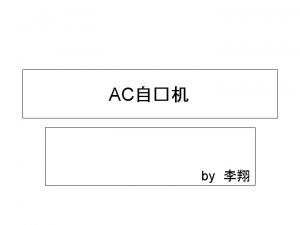ncd intersectoral action contact galeag who int ncd








![identifying mutual interest [example 1] ncd and tb identifying mutual interest [example 1] ncd and tb](https://slidetodoc.com/presentation_image_h/10c9a27e3617877b94421089dc2797d2/image-9.jpg)



![specificity of purpose [example 2] ncd & transport specificity of purpose [example 2] ncd & transport](https://slidetodoc.com/presentation_image_h/10c9a27e3617877b94421089dc2797d2/image-13.jpg)









- Slides: 22

& ncd intersectoral action contact : galeag @ who. int

ncd sdh dev

sir george alleyne threesteps

threesteps mutuality of interest specificity of purpose identification of specific resources

a range of interests globalisation fiscal instruments food trade health systems sustainable development synergies with urban planning a. t. m. public policy & health systems intervention points e. g. prsp climate change specific populations children, mothers gender equity education ageing

adelaide statement http: //www. who. int/entity/social_determinants/hiap_statement_who_sa_final. pdf

adelaide statement tools and instruments • inter-ministerial and inter-departmental committees • cross-sector action teams • integrated budgets and accounting • cross-cutting information and evaluation systems • joined-up workforce development • community consultations and Citizens’ Juries • partnership platforms • Health Lens Analysis • impact assessments • legislative frameworks

http: //www. health. sa. gov. au/pehs/Hi. AP/health-lens. htm
![identifying mutual interest example 1 ncd and tb identifying mutual interest [example 1] ncd and tb](https://slidetodoc.com/presentation_image_h/10c9a27e3617877b94421089dc2797d2/image-9.jpg)
identifying mutual interest [example 1] ncd and tb

global plan | tb not eliminated by 2050 current trend (0. 5%) extrapolated 1000 global plan prediction incidence falls 5 -6% per year 10 desired trend elimination target: 1 / million / year by 2050 1990 2000 2010 2020 2030 100 2040 1 2050 incidence/million/yr 10000

population attributable fraction selected risk factors relative risk for active tb disease weighted prevalence (22 HBCs) population attributable fraction hiv infection 8. 3 1. 1% 7% malnutrition 3. 0 17. 2% 25% diabetes 3. 0 3. 4% 6% alcohol use (>40 g / d) 2. 9 7. 9% 13% active smoking indoor air pollution 2. 6 18. 2% 23% 1. 5 71. 1% 26% source: lönnroth k, raviglione m. global epidemiology of tuberculosis: prospects for control. semin respir crit care med 2008; 29: 481 -491

additional tb intervention entry points 1. improving access and early case finding: – target risk populations: poor people, urban slums, vulnerable groups – target "clinical risk groups": hiv, smokers, malnourished, diabetics, alcoholics 2. risk factors: within health system – managing comorbidities within ntps: hiv, smoking, nutrition, diabetes, alcohol, etc – integrated management and preventive actions within phc (part of hss agenda) 3. determinants: beyond the health system – joint across priority public health conditions – action within ntps: poverty reduction and improved living conditions among tb patients – advocate for social change: ntps, the stop tb partnership, activists, civil society
![specificity of purpose example 2 ncd transport specificity of purpose [example 2] ncd & transport](https://slidetodoc.com/presentation_image_h/10c9a27e3617877b94421089dc2797d2/image-13.jpg)
specificity of purpose [example 2] ncd & transport

Transport: a common upstream cause of many risks to health u u u Physical inactivity → 1. 9 million deaths Traffic injuries → 1. 2 million deaths Ambient air pollution → 800, 000 estimated deaths in cities Climate Change → over 150, 000 deaths Noise – annoyance, learning issues for children Networks of support, urban quality of life Slide by: Carlos Dora, WHO

Health sector response: disconnected, little understanding of co-benefits from policy decisions Noise TRAFFIC INJURIES PHYSICAL INACTIVITY AIR POLLUTION CLIMATE CHANGE Slide by: Carlos Dora, WHO

What are the issues identified by the other sector? Stakeholders analysis • NGOs – car dependency, no support for walking and cycling or public transport • Environmentalists worried about externalities • Transport sector concerned with traffic congestion • International agencies slow negotiations on transport and environment (OECD, UNECE) • EEHC agreed to support focus on THE (Austria, Denmark, Netherlands, Slide by: Carlos Dora, WHO Switzerland. . . )

Why should governments act? To make optimal decisions in view of competing points of view Car and Road lobby: “Benefits outweigh the Costs, the health burden is a price societies pay for mobility and convenience they enjoy. ” Health & Environment: “Healthy transport can improve public health, safeguard the environment, enhance access and the economic vitality of cities” Slide by: Carlos Dora, WHO

To give a voice to groups excluded from decision making • Children are vulnerable to injuries, air pollution and noise, their cognitive and physical development require exploration of the neighbourhood and outdoor activity. • Children and other vulnerable groups are exposed to risks from traffic but enjoy few benefits from it. • These groups often do not have a voice to influence decisions. Governments need to be that voice. Slide by: Carlos Dora, WHO

To promote health equity • Exposure to health risks depends on mode of transport used • Need to ensure safety of people using all modes • Pedestrians and cyclists do not cause pollution, contribute to reducing traffic congestion, will use health services less and be more assiduous to work, but are exposed to health risks caused by motor vehicle users (injuries, pollution) Slide by: Carlos Dora, WHO

Tools • • • Scenarios Case studies Health impact assessment Evidence clearinghouse Guidance for economic assessment Performance standards Slide by: Carlos Dora, WHO

intersectoral mechanisms/instruments for implementing hiap – formal consultations on e. g. legislation – horizontal public health committees (legal base) – ad hoc committees on specific initiatives – public health reporting (with cooperation of other sectors, legal base) – formal communication between sectors (e. g. bilateral meetings of permanent secretaries) – informal contacts at desk level – impact assessment (integrated/health) Slide by: Timo Ståhl, THL

tha yo nk u ncd sdh dev
 Sum0
Sum0 Divideint
Divideint Int max(int x int y)
Int max(int x int y) Interface calculator public int add(int a int b) class test
Interface calculator public int add(int a int b) class test Public void drawsquare(int x, int y, int len)
Public void drawsquare(int x, int y, int len) Appropriate technology in primary health care
Appropriate technology in primary health care Jiaf guidance
Jiaf guidance 아두이노 const int
아두이노 const int Mainint
Mainint Int main int argc char argv
Int main int argc char argv Int main int num 4
Int main int num 4 Nnxn com
Nnxn com Void swap(int a int b)
Void swap(int a int b) Int factorial(int n)
Int factorial(int n) Int.max
Int.max Void f(int i) int j=0
Void f(int i) int j=0 Interface myinterface int foo(int x)
Interface myinterface int foo(int x) Contact vs non contact forces
Contact vs non contact forces Schottky contact vs ohmic contact
Schottky contact vs ohmic contact Non contact forces portfolio
Non contact forces portfolio Need a service chapter 2
Need a service chapter 2 Non contact force examples
Non contact force examples Irritant vs contact dermatitis
Irritant vs contact dermatitis
